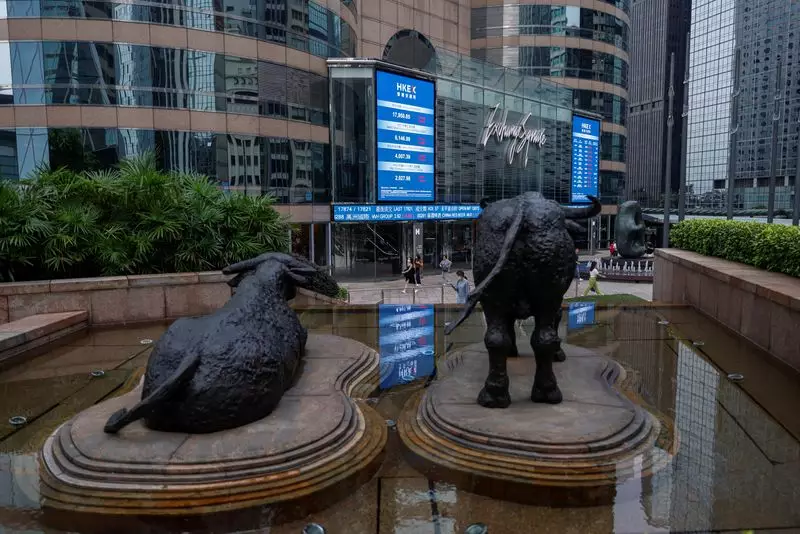On Wednesday, the Chinese stock market witnessed a notable decline as cautious investors reassessed the swift optimism surrounding the country’s recovery from economic challenges. This sentiment was amplified by significant drops in commodity prices, which served as a reminder of the global interconnectedness of markets. The decline followed news from China’s National Development and Reform Commission (NDRC), which failed to provide substantial details on stimulus measures, leaving market players in a state of uncertainty. The Shanghai Composite and the CSI300, which comprises blue-chip stocks, both tumbled approximately 3%, reflecting a broader hesitance to invest heavily under current conditions.
Investor expectations had been buoyed previously by optimistic reports suggesting a potential uptick in economic activity in China. However, the abrupt shift in sentiment is indicative of the fragile recovery phase that the world’s second-largest economy is currently navigating. Mizuho’s head of macro research for Asia, Vishnu Varathan, criticized this wave of disappointment, labeling it as “premature and misguided,” underlining the NDRC’s role limits concerning fiscal stimulus announcements.
The turmoil in Chinese markets has not remained contained; it has significantly affected commodity prices globally. Brent crude futures rose slightly to stabilize at $77.79 a barrel after a sharp 4.6% drop the previous day. This fluctuation raises questions about how interconnected commodity markets are with regional developments and how they might reflect broader economic health. The scenario was compounded by a 5% loss in iron ore prices, yet the commodity found a temporary support level at $106 in Singapore. This paints a complicated picture for investors who are possibly caught off-guard by the volatility.
In the Asia-Pacific region, the MSCI index for shares outside Japan rose by 0.6%, mostly driven by a rebound in Hong Kong stocks, which surged by approximately 2%. This uptick provided a glimmer of hope amidst the widespread downward pressures seen in other markets. Despite significant losses earlier, movements in certain sectors demonstrated a resilience likely fueled by speculation or technical corrections.
In contrast to events in Asia, U.S. markets appeared steadier amidst reassurances pertaining to the health of the economy. Federal Reserve officials have been vocal about a potential ‘soft landing’ for the U.S. economy, following a surprisingly strong jobs report that indicated robust labor market conditions. New York Fed President John Williams remarked positively on the current economic climate, pointing to falling inflation rates as a sign that interest rates could be lowered in the future. This optimism invigorated equity futures across the U.S., reflecting a belief that a recession might be avoided.
Trader sentiments articulated by analysts revealed a recalibration regarding interest rate expectations. Market projections have tempered the likelihood of a 50-basis point cut in November, settling instead at a roughly 88% chance for a 25-basis point reduction. This clear communication from the Fed offers navigational clarity for investors, who have faced headwinds from past volatilities in both international and domestic markets.
The U.S. dollar has maintained a solid performance, buoyed by the rise in government bond yields, climbing to $1.0968 against the euro and holding steady at 148.25 yen. Meanwhile, the New Zealand dollar weakened by 0.6%, resulting from sweeping interest rate cuts and a pessimistic outlook shared by the Reserve Bank of New Zealand (RBNZ). Such dynamics in currency values underline the significant challenges that central banks are facing globally as they navigate through fluctuating inflation rates and economic growth trajectories.
The current state of global financial markets illustrates the complexity of economic interactions in our interconnected world. With Chinese markets rattled by a lack of stimulus clarity and U.S. confidence seemingly rebounding, investors must remain vigilant. As upcoming reports from the Federal Reserve await scrutiny, these market movements will continue to shed light on both regional and global economic health, making this an essential period for stakeholders across markets.

